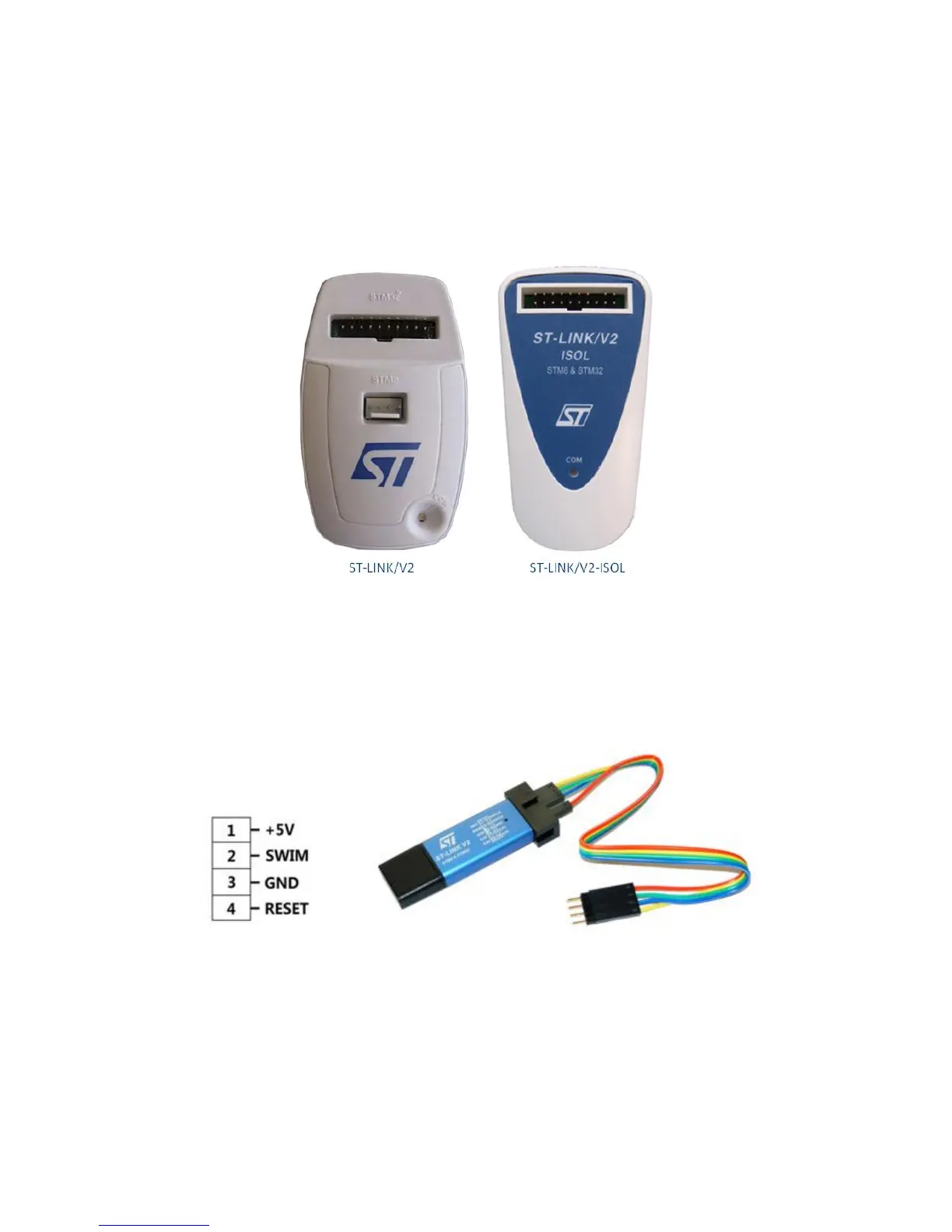Hardware Tools
The list of hardware tools needed is not very long. We will obviously need a STM8 board and I prefer
a Discovery board over other boards since it comes with a built-in ST-Link programmer/debugger
hardware. If you have some other board like the ones I already showed, you will need a ST-Link
programmer. I recommend an additional ST-Link programmer apart from the one available on board.
ST-Link programmers/debuggers communicate with target STM8 micros via SWIM interface. This
interface is the standard for all STM8 micros. Basically, it is a four-wire interface with two wire (VDD
and GND) being used for powering the target. The rest two are reset I/O and SWIM I/O. In the official
ST-Link V2 programmer unlike other ST-Link programmers, there is a dedicated port for SWIM
interface with STM8 inscribed near it. Cheap USB flash drive-sized ST-Links are also available in the
market and they are portable and as good as the official ones.
Apart from these we will also require some basic electronic lab stuffs like a USB-to-serial converter,
connecting/jumper wires, LEDs, buttons, various types of sensors, etc. that are typically found in a
common Arduino starter kit.
